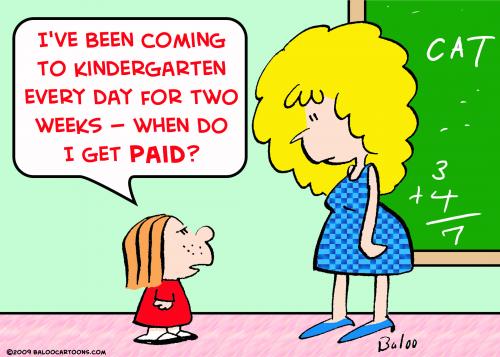Larry Cuban on School Reform and Classroom Practice: The Persistent Dilemma of Play, Work, and Testing in Prekindergarten
New York City schools welcomed 50,000 four year-olds to prekindergarten last week. Ginia Ballafante summarized crisply the dilemma facing over 4,000 pre-K teachers:
“How the city’s educators will cultivate an environment of thrilling, digressive learning while aiming to reduce the enormous word deficits many children come to school with and at the same time keep the tensions and pressures of high-stakes testing from filtering down to the world of tiny people with Pixar lunchboxes remains one of the most significant and least explored questions around the expansion of prekindergarten. How they will nurture the distinct kind of teaching skill required to execute play-based learning successfully is yet another.”
And Ballafante is right on the mark. If kindergarten is the new first grade as some progressive critics point out, then prekindergarten threatens to become boot camp for kindergarten.
First, let me establish that kindergarten is, indeed, becoming the new first grade. In a recent study looking back at how kindergartens have changed in the past 15 years under a regime of testing and accountability, researchers found the following:
*The percentage of teachers who indicated that incoming kindergarteners need to know most of their letters or count to twenty doubled. In 1998 less than one-third of kindergarten teachers agreed that children should learn to read in kindergarten. By 2006 that number had more than doubled to 65 percent.
*Time spent on reading and language arts rose about 25 percent or from 5.5 hours to 7 a week.
*There was no change in percent of time spent on math instruction but there were significant drops in teaching time spent on social studies, science, art, and physical education.
Many urban children come to preschool (and kindergarten) with many strengths (often unrecognized in school settings) and weaknesses such as deficits in words that are the currency of formal schooling. The onset of testing five year-olds has commenced–25 states mandate assessing 5 year-olds. So how to get young children up to speed to do well on these tests has accelerated the move toward academic instruction for kindergarteners with the pressure inevitably seeping down to three year olds. This shift toward academic instruction has put the spotlight on exactly how much of school experiences for three-to-five year-olds should be play and how much academic work in light of the demands of testing for determining first grade for young children and teacher evaluation.
Two Bank Street College educators (New York City), however, do not see a conflict between work and play for pre-kindergartners. “This is a false choice,” they say. “We do not need to pick between play and academic rigor.” They continue:
As they play, children develop vital cognitive, linguistic, social and emotional skills. They make discoveries, build knowledge, experiment with literacy and math and learn to self-regulate and interact with others in socially appropriate ways. Play is also fun and interesting, which makes school a place where children look forward to spending their time.
What does play look like in a room filled with three- and four year-olds?
When you step into an exemplary pre-K classroom, you see a room organized by a caring, responsive teacher who understands child development. Activity centers are stocked with materials that invite exploration, fire the imagination, require initiative and prompt collaboration. The room hums.
In the block area, two girls build a bridge, talking to each other about how to make sure it doesn’t collapse and taking care not to bump into the buildings of children next to them. In an area with materials for make-believe, children enact an elaborate family scenario after resolving who will be the mommy, who will be the grandpa and who will be the puppy. Another group peers through a magnifying glass to examine a collection of pine cones and acorns. On the rug, children lie on their stomachs turning the pages of books they have selected, while at the easel a boy dips his brush into red paint and swoops the paint mostly onto his paper.
Work and play become one. “Play,” they say, “has long-lasting benefits. What is referred to as self-regulation in preschool becomes resiliency in high school.” During the summer, these pre-K teachers were worried over the impact of testing in kindergarten trickling down into their classrooms in worksheets, drills on words and colors, and group lessons on phonetics and numbers.

The idea that play and work are intimately connected and in young children learning is not separated into bins–silos are favored academic-speak–but are as one means that there is no dichotomy, no dilemma. It is a classic case of reframing what appears as a dilemma into a problem that can be solved. That is what these educators are trying to do. They end their op-ed by saying:
But we still need to help parents, administrators and policy makers see what the children themselves know intuitively: Classrooms that pulse with meaningful play are our smartest investment.
So true.
This blog post has been shared by permission from the author.
Readers wishing to comment on the content are encouraged to do so via the link to the original post.
Find the original post here:
The views expressed by the blogger are not necessarily those of NEPC.
